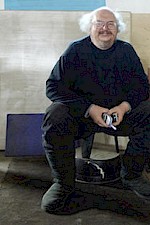Anechoic Chambers
We often hear about “anechoic chambers” being used in developing speakers. What is their value, since home environments are not “anechoic”? Do they have a place in the design of real world speakers?
An anechoic chamber is a room mostly filled with sound absorbing material.
What is their Value?
For those who have experienced it, particularly for the first time, an anechoic chamber can be a profoundly unsettling experience. While we don’t usually recognize it, the resonances and “echoes” within a space are very important in our understanding of that space and removing them is a form of sensory deprivation. When sound is created inside an anechoic room, the vast majority of it gets absorbed. So, when a speaker is tested in such a room, only the sound going from the speaker directly to the microphone is picked up by the microphone. Any sound going in any other direction is absorbed. This removes the room reflections from the measurements. Only the speaker’s output in the direction of the microphone is measured, providing the designer with much more detailed information than when room reflections are added to the direct signal.
In practice, there are some limitations, mostly in the low frequencies. This is because the amount of energy in a single cycle to be absorbed is inversely related to the frequency: a 50 Hz cycle has 200 times as much energy as a 10 kHz cycle. With 200 times more energy, it is 200 times more difficult to absorb the 50 Hz sound. Even with a low frequency limit, it is very useful to know what sound is coming directly from the speaker.
You can move the speaker around and by testing the speaker from lots of different directions, the designer can learn the dispersion of the speaker. When the speaker comes back to the real world with floors, walls and ceilings, the dispersion will have a big effect on the total sound since it will now reflect off the room surfaces and reach your ears slightly later than the direct sound. When this delay equals half a wavelength, that note will nearly disappear at that spot in space. When this delay equals a full wavelength, this note will now seem twice a loud. It is easy to see how you can get giant holes and big peaks in the frequency response when measured at one point in space in a real room.
Reflections
In the real world (except through earbuds) there are always major, audible reflections. Even outdoors in a field there are reflections from the ground. Our ear/brain hearing system is very good at analyzing these normal situations. Anechoic chambers have been very useful in examining how these reflections affect our perception of the sound. An experimenter can set up the main speaker for the main signal and one or more speakers to reproduce the “reflections.” Then listeners in the anechoic chamber can compare the signal with and without the reflection.
The results of those kinds of comparisons have been very useful in designing speakers. For instance, if there is an early “reflection” that is very similar to the direct signal, our brain quickly identifies it as a reflection and the source is the first arrival. If the early “reflection” is quite different from the direct signal, our brain tends to think it is another signal and both locations can be identified. In the first case more low level details can be discriminated than the second.
Recording studios have often had their early reflections absorbed because the off-axis responses of the popular studio monitors of the day were so unlike the direct source, it confused the listeners instead of adding inner detail. Most of today’s monitors have good horizontal dispersion; although the vertical dispersion often leaves a lot to be desired.
Ohm Walsh speakers have near perfect left-right dispersion and exceptionally good up-down dispersion. I believe the extra inner detail a listener gets from the early reflections is critical to the precise soundfield and wide sweet-sweept the Walshs create.
So, unsettling as anechoic chambers may be, they are a significant tool in designing speakers that are optimal in the real world of reflections, resonances and echoes.
Enjoy & Good Listening!
John
Subscribe to Ohm News & Views to get the latest posts in your inbox
John Strohbeen Author
John Strohbeen was the President and Chief Engineer of Ohm Acoustics from 1978-2023.


